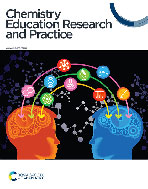Investigation into the intersection between response process validity and answer-until-correct validity: development of the repeated attempt processing issue detection (RAPID) method
Abstract
With the already widespread nature of multiple-choice assessments and the increasing popularity of answer-until-correct, it is important to have methods available for exploring the validity of these types of assessments as they are developed. This work analyzes a 20-question multiple choice assessment covering introductory undergraduate chemistry topics which was given to students in an answer-until-correct manner. Response process validity was investigated through one-on-one think-aloud interviews with undergraduate chemistry students. Answer-until-correct validity was also explored using an analysis of partial credit assignments. Results indicated the convenience of the quantitative partial credit method came at great cost to the precision of validity issue detection and is therefore not a valid shortcut to more rich qualitative approaches. The repeated attempt processing issue detection (RAPID) method is a novel method developed as a combination of response process and answer-until-correct validity. Results from this new method revealed validity issues that were undetected from the use of either approach individually or in concert.


 Please wait while we load your content...
Please wait while we load your content...